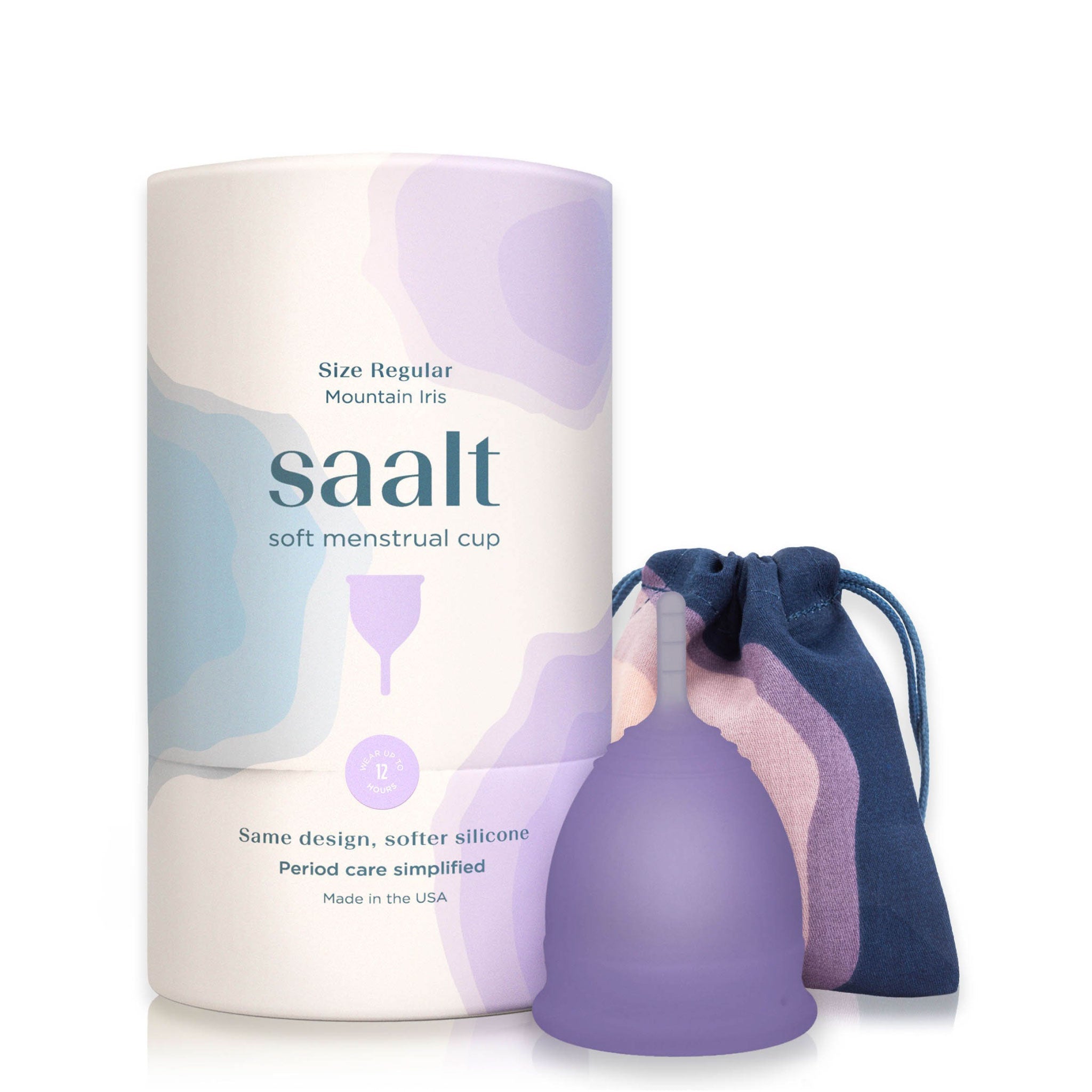This year, Saalt has partnered with MILK: Every Woman's Marathon to help support and educate how a runner can be successful on their period. Training for a marathon is a huge undertaking, and as a female distance runner, your menstrual cycle can provide an added challenge or secret weapon depending on how you look at it. Your period can affect how excited you are for your interval workout, how bloated you feel when carb-loading, and even what pair of shorts you may want to wear on race day.
Knowing where you are in your cycle and how to adapt your training plan can help get you through the marathon build-up and set you up for success when your period surprises you on race day (because we all know that is bound to happen). This may be a refresher to 6th-grade health class but let’s start with the cycle basics:
Embrace the Flow: Understanding the Menstrual Phase
During the first few days of your period, you might experience cramps, fatigue, and bloating. It’s okay to acknowledge these symptoms and adjust your training plan accordingly. Consider scheduling lighter runs or incorporating more rest days. Your body is doing a lot of work, so listen to it.
Harness the Power: The Follicular Phase
The days following your period leading up to ovulation can be a fantastic time for training. Increased estrogen levels often lead to higher energy and strength. This phase is optimal for pushing your limits with longer runs and high-intensity workouts. Take advantage of this natural boost to tackle that daunting long run or harder workout.
Beware the Mid-Cycle Dip: Ovulation
Ovulation occurs around the middle of your cycle. Some women feel a surge of energy, while others might experience discomfort or pain. Pay attention to how you feel and be flexible with your training. Maybe that pace that was so easy to hit last week is a slog. If you’re not feeling your best, it’s perfectly fine to scale back a bit. Take off the Garmin so you are not tempted to compare workouts, find a friend to keep you company for some slower miles, or pick a route that is more scenic so you can slow down and focus on the view.
The Luteal Phase: Preparing for the Long Run
As you move into the luteal phase, progesterone levels rise. You might notice increased body temperature, fluid retention, and mood swings. These changes can affect your endurance and overall performance. Focus on moderate-intensity workouts and prioritize hydration and nutrition. Eating a balanced diet rich in complex carbohydrates, lean proteins, and healthy fats can help manage these symptoms. This is a great time to check in with your body and make sure that you are fueling well.
Injury Prevention: Be Proactive
Some studies suggest that hormonal fluctuations during your cycle can impact ligament laxity, potentially increasing your risk of injury. Strength training and flexibility exercises can help keep you injury-free along with a proper warm-up and cool down.
Mental Health: Stay Positive
Your mental state is just as important as your physical condition. Mood swings and PMS can make marathon training seem daunting. Be kind to yourself and know that each run is unique. Keeping a training journal or tracking your cycle can provide valuable insights and boost your motivation.
Testing Reusable Period Products: Comfort for Long Runs
A lot of runners obsess about finding the perfect pair of running shoes but one key piece of equipment you might not have considered is the type of period product you use during training. While most people default to tampons and pads in their daily wear, these products use cotton for absorption which can be problematic for sweaty high-intensity exercise like running. Running is hard enough, you don’t need the extra weight of a soggy maxi pad to slow you down. Reusable menstrual products, such as menstrual cups, menstrual discs, or period underwear, can offer greater comfort and convenience for long training runs. Here’s why:
- Comfort: Menstrual cups and menstrual discs are designed to be worn for longer, often up to 12 hours, without needing a change. This means fewer interruptions during long training sessions or when you are out on a marathon course for a few hours.
- Fluid Capacity: Menstrual cups and discs can hold more fluid than traditional tampons or pads, reducing the risk of leaks and allowing you to focus on your run.
- Better for sweat: Unlike traditional pads period underwear utilizes the same technology as your favorite running tank, designed to pull moisture away from the skin leaving you feeling drier during long runs and preventing the dreaded thigh chafing.
While reusable products can be a better experience, it is essential to test these products during your training runs to see which works best for you. Start using them on an easy day. Alternatively, wearing them around the house before race will help you feel more confident in their coverage and with the span of hours you can go between changes. Practicing during your training cycle will help set you up for success on race day.
Personalization: Your Cycle, Your Training
Every woman’s cycle is unique. Tracking your menstrual cycle with an app can help you understand your own patterns and how they affect your running. Use this data to tailor your training plan to your body’s rhythms.
Seek Support: You’re Not Alone
Talk to other female runners about their experiences. You’ll find that many have faced the same challenges and have valuable advice to share. Everyone’s cycle is unique but those who have undergone a few marathon training cycles may be able to provide some helpful tips or words of encouragement when you are not feeling your best.
Training for your first marathon is a journey, and your menstrual cycle is just one part of the equation. By understanding and working with your body, you can optimize your training and achieve your marathon goals. Remember, your body is your best guide. Listen to it, respect it, and trust in your training. Happy running!





